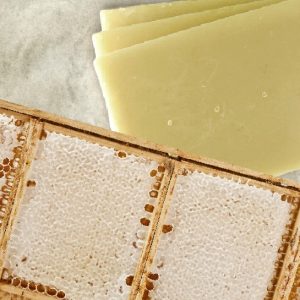3 Reasons to Use Wax On Your Wooden Beehive
There are an estimated 125,000 beekeepers in the U.S. Most beekeepers build artificial hives for bees out of wood, using beehive wax to protect the hive. Keep reading to learn three reasons to use beehive wax to create a colony in your own backyard.

Top 3 Reasons for Using Wax to Protect Beehives
If you’re thinking about coating your beehive, consider these top three reasons for using wax as your coating material:
1. Cuts Down on Chemicals
Beehive wax is a combination of paraffin wax and microcrystalline wax. Paraffin wax is a petroleum wax derived from crude oil. It is a versatile wax type that is colorless and odorless. Microcrystalline wax is another petroleum wax derived from crude oil. It is flexible and acts as a binder to stick to the wooden hive.
Using a paraffin and microcrystalline wax blend to coat your beehive is a more natural and chemical-free approach to beekeeping. Although paint and stain can do a decent job of protecting a beehive from the elements, these manufactured products may expose your bees to strong chemicals, which can be detrimental to their well-being.
2. Increases Protection
Coating the wood hive in wax both preserves the wood and helps protect the bees from diseases. Protecting bees from disease is very important since many bee colonies are starting to die off. Bees are also more likely to accept a wax-coated hive than a painted or stained hive.
Using wax is also a sustainable and reliable way to give your beehive a protective coating. A wax coating can withstand rain, sun and snow to preserve the wood below. Preserving the wood adds an extra layer of protection from environmental factors that can damage the hive and cause it to rot. Rotting hives are hazardous to bees because it exposes the hive to weather.
3. Enhances Appearance
A beehive with a wax coating will look similar to a stained hive, with its beautiful, golden sheen. A wax coating will give the wood a subtle glow that makes for an extremely attractive beehive. As a bonus, the beeswax will have a slightly sweet, pleasant smell that both you and your bees will enjoy.
How to Use Wax for Beehive Protection
Beehive wax is easy to apply to wooden hives. All you have to do is follow these simple steps:
- Heat up your wax in a stainless steel tank to about 225 degrees Fahrenheit.
- Use a thermometer to take its temperature.
- If the wax is hot enough, gently lower your wooden beehive components into the wax.
- Place heavy objects onto the beehive to keep it weighed down in the wax.
- Set a timer for 10-15 minutes.
- After the timer goes off, carefully remove the beehive from the wax and allow it to drip dry.
- If you plan on painting your wax-dipped wood, paint it while it is still hot because the paint will adhere to the wood better.
For more information, this video has in-depth, step-by-step instructions for how to coat wooden hives.
What Is Wax Dipping for Beehives?
Wax dipping is a method of coating a beehive in wax by submerging the various beehive components into hot molten wax. While the term “dip” usually refers to a brief immersion into liquid, the beehive pieces must be placed in the melted wax for up to 15 minutes. Dipping the beehive parts for this long allows the wood to get heated and dry out so that the hot wax can seep in and replace any moisture in the timber.
The secret to a successful wax dipping session is getting the molten wax as hot as possible without exceeding any safety limits. The wooden beehive components getting dipped into the wax should also be well-heated to allow for maximum penetration of the molten wax into the wood. Heating the beehive parts to the same temperature as the wax is crucial for drying out the wood and enabling the wax to permeate it.
Because wax dipping requires heating wax to its flash point, make sure you take the proper safety measures, including wearing long sleeves, protective goggles and welding gloves. Also, have a fire extinguisher on hand.

Why Try Wax Dipping?
Wondering what the big deal about wax dipping is? Check out these top benefits of wax dipping:
- The wax covers all surfaces, both inside and out.
- Any moisture, air or sap in the hive’s timber gets replaced by molten wax, providing protection for wooden beehives.
- Molten wax can penetrate the joints, repaired sections and other difficult-to-reach surfaces of the box that paint typically doesn’t cover.
- The beehive components can be used within about 15 minutes of getting dipped.
Get Your Beehive Wax From Blended Waxes
Blended Waxes has its own specialty blend of paraffin wax and microcrystalline wax made just for coating your wooden beehives. You can learn more about our Beehive Wax here.

